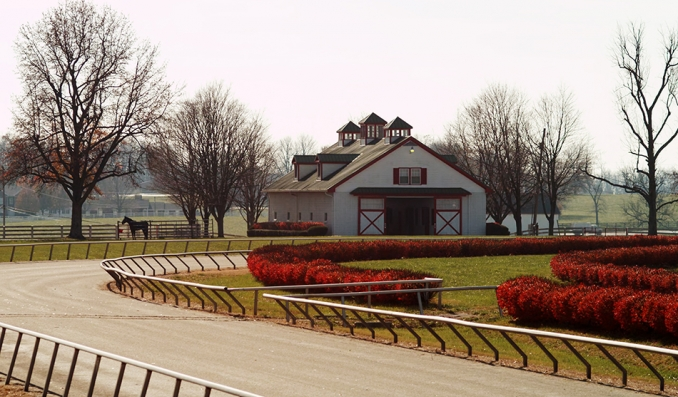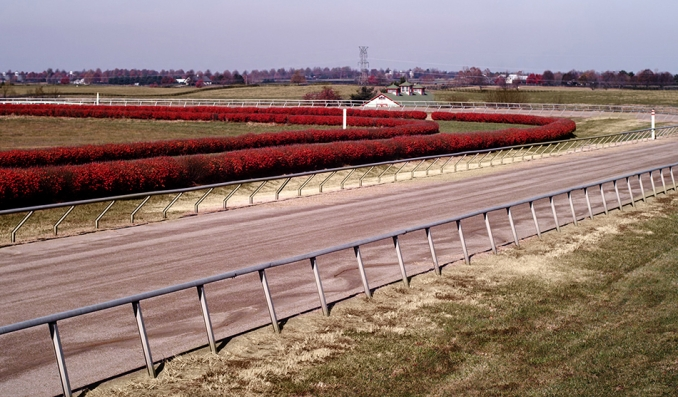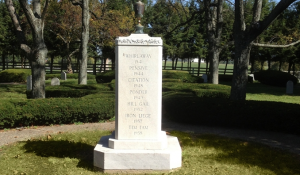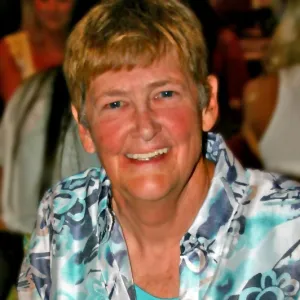The Calumet Legacy

When Oxbow scored his gate-to-wire victory in the 2013 Preakness Stakes, it raised hopes throughout the racing world that Lexington’s historic Calumet Farm was making a comeback. In the past, the iconic farm on Versailles Road had fielded more classic race winners than any other farm in Thoroughbred history, including victors in eight Kentucky Derbys, eight Preakness Stakes (counting Oxbow) and two Belmont Stakes. Two of its runners (1941—Whirlaway, 1948—Citation) won the coveted Triple Crown of Thoroughbred racing.
However, the last time a Calumet horse won a classic race was 1968, when the homebred Forward Pass was declared the winner by disqualification in the Derby and went on to win the Preakness.
From 1964 to 1977 Calumet had 20 stakes winners—a record many farms would have been proud of. For Calumet, it was a sign of deterioration. The farm was still in the headlines in 1978, when its famous three-year-old, Alydar, courageously battled his archrival, Affirmed, in the Triple Crown races, finishing second by scant margins in each case. At about that time, news stories on Calumet began to focus less on the horses and more on reports of greed, dishonesty and mismanagement. Something had gone wrong within the white-fenced pastures and red-trimmed barns of the legendary farm.
The fall of America’s premier racing dynasty reads like a Dick Francis novel–but the story must start with its rise to fame.
Calumet Farm dates back to 1924, when William Monroe Wright, owner of the Calumet Baking Powder Co., purchased the 768-acre parcel and began breeding Standardbreds for harness racing. He was successful at it, and counted The Hambletonian among his wins.
Wright’s son Warren took over after his father’s death and changed the farm’s focus to Thoroughbred racing. Throughout the 1930s Wright built the foundation for a breeding empire. Acquisitions included an interest in the English Derby-winning sire Blenheim II, and a mare in foal to American Flag. The foal, Nellie Flag, was the farm’s first champion, and the first to carry the devil-red and blue colors. The Wrights also bought a yearling colt, Bull Lea, who would become the nation’s five-time leading sire and produce a string of winners for the farm.

In 1939, famed trainer Ben Jones and his son Jimmy became a part of the Calumet team. Two years later, Ben Jones saddled the farm’s homebred Whirlaway (by Blenheim II) to win the first Kentucky Derby for Calumet. Whirlaway went on to capture racing’s elusive Triple Crown, only the fifth horse to do so.
During the 40s and 50s Calumet-bred horses trained by the Joneses dominated Thoroughbred racing. Among them was Citation, who won the Triple Crown in 1948 and became the first Thoroughbred to win more than $1 million. He’s ranked as one of the best racehorses in history along with the likes of Man O’ War and Secretariat, who in 1973 became the first Triple Crown winner since Citation.
After Calumet owner Warren Wright died in 1950, his wife Lucille took over the running of the farm and later married Admiral Gene Markey. Trainer Ben Jones died in 1961, and the great sire, Bull Lea, died three years later. Ben’s son Jimmy retired in 1964 and Calumet’s fortunes began to wane. Forward Pass’ Derby and Preakness wins in 1968 were the final hurrahs for the aging Markeys.
When John Veitch took over as trainer in 1976, the farm had not held leading owner and breeder titles for 15 years. When Admiral Markey died in 1980 and Lucille Markey passed away two years later, Mrs. Markey’s daughter, Bertha Wright, and her four children inherited Calumet. J.T. Lundy, who was married to Bertha’s daughter Cindy, took over the operation of the farm.
Veitch conditioned three great fillies for the family—Davona Dale, Our Mims and Before Dawn. He also saddled Alydar, a brilliant racehorse who retired to stud at Calumet. Alydar became America’s leading sire in 1990, and brought Calumet Farm the 1990 Outstanding Breeder Eclipse Award.
Alydar’s son, Criminal Type, was named Horse of the Year in 1990. The horse’s name is ironic, considering the events of that year. J.T. Lundy’s eight years of egregious mismanagement had sapped the farm of its resources and amassed an estimated $150 million in debt. When Alydar broke his leg in his stall–under suspicious circumstances– Lundy collected a $36.5 million insurance policy, but it was not enough to save Calumet from bankruptcy. (After nine years of litigation, Lundy and the farm’s chief financial officer went to prison for fraud and bribery in 2000.)

On March 26, 1992, Calumet and all of its assets were to be auctioned off under a big tent on the property. Developers had already drawn up plans to carve up the farm and build houses on it. At the last moment, Henryk de Kwiatkowski, owner of 1982 Horse of the Year Conquistador Cielo, dropped in by helicopter from his home in the Bahamas. He placed the top bid of $17 million, pledged not to change even “a blade of grass†at Calumet—and became an instant hero to racing fans everywhere.
True to his word, de Kwiatkowski restored the farm to its former glory (to the tune of a purported $60 million), but by the time of his death in 2003 he had not yet restored Calumet as a major force in racing.
However, the farm was doing well and adding stallions to a growing breeding operation in 2012, when de Kwiatkowski’s heirs sold Calumet for an estimated $40 million to the Calumet Investment Group. The new trust then leased it to horseman Brad Kelley, one of the ten largest private landowners in the U.S.
Kelley, who owns two other farms in Lexington, moved his 200 horses to Calumet and in 2013 sent Oxbow to the post in the Triple Crown races, winning the Preakness. However, Oxbow did not carry Calumet’s famous red and blue colors. Instead, jockey Gary Stephens wore Kelley’s black and gold silks. During the 1992 auction of Calumet’s assets, the farm’s colors had been sold to a racing operation in Brazil for a reported $12,000.
Rumor has it that Kelley may petition The Jockey Club to revive Calumet’s classic silks.
Like the colors, Calumet’s trophies might also have been lost. But in 1982, when Lucille Markey was in failing health, longtime farm secretary Margaret Glass sought the help of Keeneland Association CEO and future President of the Breeders’ Cup, James E. Bassett III, to protect the collection. Together they arranged for the farm’s 524 trophies and 28 paintings to be loaned to the International Museum of the Horse.
Fourteen years later, when the trophies and paintings were destined to be sold to settle farm’s bankruptcy debts, Bassett, Glass and a group of concerned Lexingtonians launched a campaign that eventually raised $1.2 million from individuals to save the Calumet legacy. The state of Kentucky chipped in another $1.5 million and the collection became the property of the Kentucky Horse Park.
Representing 50 years of racing in America, the trophies are not only a unique tribute to the sport, but also to the generations of craftsmen who created them. As you stand in the International Museum of the Horse’s area dedicated to Calumet–with countless points of light reflecting from the gold, silver and crystal works of art–you’ll understand the passion behind the preservation of the priceless collection.
Meanwhile, Brad Kelley represents the start of a new chapter for Calumet—and the racing world is watching.
Tags:
About Dale

In the course of her life, she has exercised racehorses at New York's Belmont Park, shown jumping horses on the A Circuit, driven a race car with the late Paul Newman, and played the world's most famous golf courses. She is a former private pilot and an avid scuba diver. Read More...

In the course of her life, she has exercised racehorses at New York's Belmont Park, shown jumping horses on the A Circuit, driven a race car with the late Paul Newman, and played the world's most famous golf courses. She is a former private pilot and an avid scuba diver. Read More...
